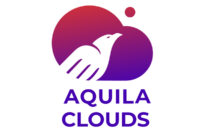Backup Solutions

Enterprise Backup Solutions
Backup and recovery is a dynamic challenge with ever-changing needs. It’s time to get one step ahead and leave reactive plans in the dust.
The challenges of data management and backup
Organizations are challenged to meet their data availability and management needs as technology changes. Adding to this pressure is the speed at which they have to change due to new market requirements, evolving global supply chain dynamics, and competitors’ moves. All putting strain on IT to support business growth and innovation.
As more and newer technologies are added to meet the organizations’ needs and demands, data is located across multiple environments, including hybrid and multi-cloud as well as remote and distributed environments, increasing the risk of data loss and compromising data recoverability. This mix of technology is unavoidable as IT evolves and new technologies are introduced to solve them. Multigenerational technology causes data and workloads to fragment across the entire data landscape, creating data silos. Ultimately, this increases the complexity and difficulty to ensure consistent recoverability across the environment.
The challenge with backup and recovery point products
Not long ago, you needed separate point products or custom scripts for almost every application, platform, or array with data that required backup. Each of these came with its own infrastructure, licensing, schedules, and unique user interfaces that IT teams were required to operate and support. Even today, we see newer vendors in the market only supporting a limited set of workloads, forcing you to either deploy multiple solutions or build your own customizations to cover all your data needs completely.
As an IT professional, you’ve experienced the pain of cobbling together multiple products to try to function as one unit. Unfortunately, it takes time, effort, and cost to keep that kind of complexity in your environment. The good news? There is a better way.

Start with a comprehensive solution that not only addresses your current backup and recovery needs but is flexible and innovative enough to cover what may come tomorrow. You need to be able to account for workloads on-premises, in the cloud, across multiple clouds, and even your SaaS data sets. Native integration into these platforms and applications means that everything will work as you expect it to and deliver the kind of reporting and analytics that can help you make better-informed business decisions.
What does 3-2-1 mean for backup and recovery planning?
Best practice in backup and recovery revolves around having a 3-2-1 data backup plan. This dictates that you always maintain three copies of your data: two stored locally (but on different storage media) and one copy off-site, for a total of three.
Consider a backup copy of critical application data; your primary backup copy is stored in your data center for quick recoveries, with a second copy kept on different infrastructure (e.g., tape or disk media) to avoid a single point of failure. Then, you periodically upload your data to an off-site cloud; this would be your third copy. This copy can even be “disconnected” if needed, providing an “air gap” to protect against cyber hacking or ransomware.

Building an enterprise backup and recovery strategy
Having a proven, comprehensive enterprise backup and recovery solution gives you the confidence that your essential information is always available, no matter the scenario. From traditional disaster recoveries – everything from weather events and hardware failures to ransomware attacks – your entire environment needs to be protected and recoverable with a solution that’s both effective and easy to use. Some must-haves:
Simplicity
easy for your IT staff to manage, protect, and use your data where it exists today and wherever it is moved and stored tomorrow.
Cost optimized
streamlines operations and enables predictable growth and cost management, so you know what to expect and how to budget.
Flexibility
supports your diverse environment today and the confidence to know that your future technology decisions will be supported as well.
